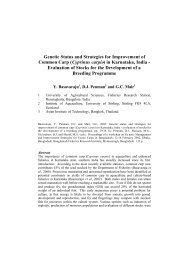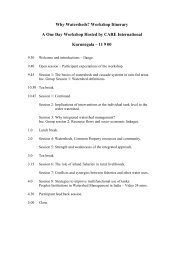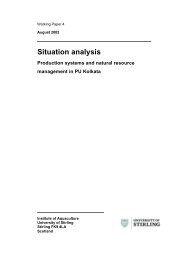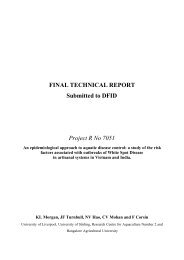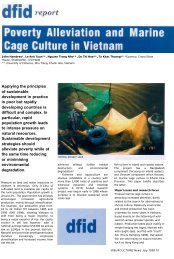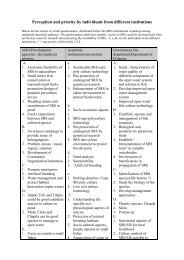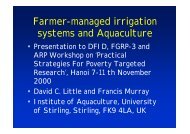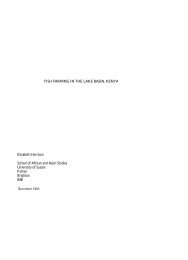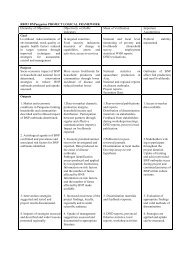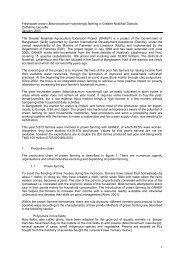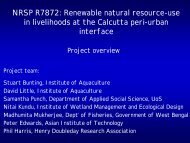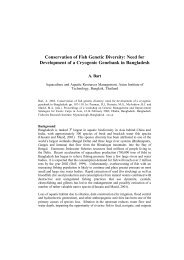Epizootic Ulcerative Syndrome (EUS) Technical Handbook
Epizootic Ulcerative Syndrome (EUS) Technical Handbook
Epizootic Ulcerative Syndrome (EUS) Technical Handbook
Create successful ePaper yourself
Turn your PDF publications into a flip-book with our unique Google optimized e-Paper software.
Introduction<strong>Epizootic</strong> ulcerative syndrome (<strong>EUS</strong>), was defined at a DFID Regional Seminarin Bangkok in 1994 as “a seasonal epizootic condition of freshwater andestuarine warm water fish of complex infectious aetiology characterised by thepresence of invasive Aphanomyces infection and necrotising ulcerative lesionstypically leading to a granulomatous response” (Roberts et al., 1994a).However, research since that time, discussed in the aetiology and epidemiologysections of this handbook, suggest a complex aetiology is not necessarilyinvolved in all cases. Reference to a specific fungal pathogen (Aphanomycesinvadans) could also now be included in the case definition for <strong>EUS</strong>. With thesedevelopments, <strong>EUS</strong> could be considered to be characterised beyond the levelof a syndrome, however the name “epizootic ulcerative syndrome” is wellknown among fish health workers, and will continue to be used for thepurposes of this booklet.A previous review, published by AAHRI and NACA in 1992, brought togethermuch of the literature on the subject published in national and internationalarticles, reports and conference proceedings. It is intended that the presentpublication will have additional practical applications to assist fish healthworkers in the diagnosis and control of <strong>EUS</strong>. In particular, there is asubstantial annex section, which includes information on fungal and viralisolation and identification, an outline for outbreak investigations, and <strong>EUS</strong>reporting datasheets. It should be emphasised that there are a large numberof different ulcerative fish conditions, and a positive <strong>EUS</strong> diagnosis can bemade only by histological confirmation of particular distinctive featuresdescribed here on page 31. Therefore, it is hoped that this handbook will alsoencourage fish health workers to investigate other ulcerative conditions, if adiagnosis proves to be <strong>EUS</strong> negative.1




